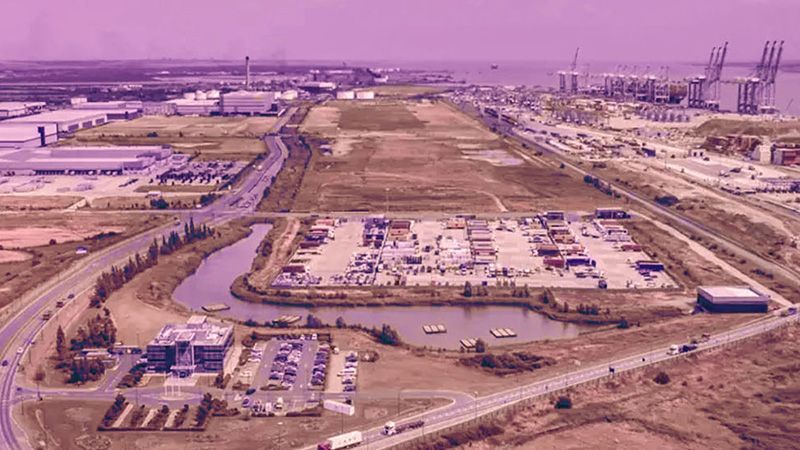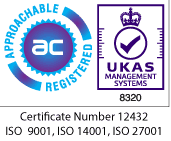Industry Insights
Our constant engagement with an evolving and digitally connected world
Industry insights
Featured Case Studies

It is no exaggeration that telecommunications operators worldwide retain an abundance of ‘legacy’ networks: those using decades-old technologies for which support and maintenance contracts, software updates and hardware parts have already ceased to be available. Legacy networks become increasingly expensive to maintain as they age: a dwindling source of parts requires pricey refurbishment of the old, a situation exacerbated by accelerating failure rates causing network and service outages, and even liquidated damages to be paid. These networks should have been retired long ago. However, that they still garner significant revenue, directly and indirectly from the millions of services and other networks they transport – business voice, data, mobile access and core, emergency services, control and signalling – such that continuing worth demands some sort of technology transformation. After all, proprietary and dated tools, and manual processes associated with them, can be transformed alongside, to technologies such as Software-Defined Networking (SDN) and virtualised networks that are highly automated. So, what stands in the way of that transformation? The cost of maintaining the legacy network should outweigh the cost of transforming them, but it is not that straightforward unfortunately. Cost, risk and feasibility prove to be a very complex and circular interaction, and that is what has held back such investment, even by the most resourceful of operators. 3 Problems Three factors dominate their dilemma: Employees familiar with legacy technologies and their arcane proprietary management tools, are a diminishing proportion of the workforce. As they retire year on year, that undermines confidence, to the extent that the problem is thought best left alone Service and billing records and the actual network configuration - the so-called back-office - is data generally only in partial agreement with each other, incomplete, and not always an accurate reflection of reality. Sometimes this data is not available – older nodes can fail management communications – or are in difficult-to-consume formats. Without a reconciled and complete view, no one really knows if transformation is feasible, let alone how to conduct it reliably. Selecting the starting point is critical to success, but even with a clear big-picture strategy, so many detailed considerations and constraints contrive to make this far from obvious. Evaluating many, occasionally opposing, tactics and a myriad of interplays (customer, control, in-building services, physical distributions and virtual protections), must be confected – almost magically – into an effort, spend and recovery efficient roll-out that also mitigates all risks. The Challenge A large NA telecom local and long-distance operator had an established business case and strategy for transformation, but no longer had a planning team with the modelling capability to do so. Their scheduled goal was behind by years, so they sought to source an outside ‘Planning Tool and Service’ and select parts of their network to which it should be applied to meet their priorities. LightRiver, a well-established services supplier with advanced monitoring and management tools already deployed in their network, were awarded the contract. “Despite our accurate inventory of circuits and assets, we needed a partner that could process tens of millions of lines of data, and build a system to manipulate, sequence, and display the data in a way that was consumable and actionable. Cambridge MC was the perfect partner for us. Their tools and dashboards allow us to change the project sequence depending on the customer’s specific needs in each different area of the network.” – Matt Briley, SVP Global Sales & Solutions, LightRiver The Approach Our first step was to dispense with the original piecemeal focus on parts of the network, and analyse the whole: big data for deep insights. That revealed ‘simple’ transformations: those without ramifications for other regions, services or networks, and thereby avoid creating a large backlog of implementation work. That simplicity had to be quantified, to be credible and satisfy the operator’s priorities. We invented a novel ranked evaluation methodology to combine circa 25 complex and often diametrically opposing metrics. This yielded stepwise transformations that were well (but not critically) sequenced, such that dismantling the network became progressively simpler. Our Data Science and ML were also used to combine back-office records with actual network configuration data from LightRiver’s netFlex platform, reconciling information and filling in blanks, to provide for the first time an accurate and complete view to direct implementation and mitigate risks. Our automated ‘planning’ process could be conducted in whatever scope, scale and sequence of priorities the operator needed. Outcomes The plans produced enabled the operator to: Discover empty resources that could be powered down without any procurement. Determine the value of recoverable parts, that turned out 5x greater than anticipated, including previously untrackable inventory. Determine opportunity clusters like whole-site transformations, avoiding repeat site visits boosting field engineering efficiency. Recover their schedule to the extent that legacy products earmarked for 2025 could be conducted in 2024.

Thames Freeport is a unique initiative designed to stimulate trade and innovation and transform the lives of people in its region, leveraging global connectivity to over 130 ports in 65 countries. Occupying a strategic position with intermodal capabilities across river, rail, and road, Thames Freeport has recognised its opportunity to achieve social good, and has demonstrated an active commitment to advancing decarbonisation and fostering a circular economy. Thames Freeport is emerging as a hub for clean energy technologies, advanced logistics, and value-added manufacturing. Special Economic Zones (SEZs) such as the Thames Freeport are uniquely positioned to drive decarbonisation. By clustering industries and research institutions, SEZs enable collaboration on sustainable practices and green technology development. This concentration accelerates the adoption of renewable energy sources, smart grids, and circular economy practices.

edenseven Designs Energy Supply Strategy for H2 Green By conducting an energy sourcing review and engaging with suppliers H2 Green are a large-scale hydrogen storage business with a focus onsite close to towns and cities across the UK. H2 Green’s ambition is to build hydrogen hubs that deliver large amounts of hydrogen, providing security of supply for multiple users across whole regions. H2 Green engaged edenseven, one of the Cambridge Management Consulting group of companies, to build an electricity supply strategy to meet their growth aspirations and environmental requirements. Project Overview To provide a clear outline of the contracting structures within the UK electricity market which would support the green credentials of the business. Structures needed to range from REGO back supply contracts to more complex long-term renewables agreements. All contracting requirements needed to meet the ‘Renewables Transport Fuel Obligations’ and ‘Low Carbon Hydrogen Standard’. Investigate the commercial opportunities short short-term flexibility of assets and liaise with the supply commodity on product development. Support in consultations to government departments relating to the proposed price support mechanism. Skills & Knowledge An energy expert with a detailed knowledge of the UK energy market, with a specific understanding of the evolving policy landscape and how green hydrogen fits into the government’s forward plans. An insight into global commodity markets and the various contracting structures currently in place across the supply community. A clear understanding of how assets can be utilised in the short-term trading markets and the value of ‘optionality’. An individual who holds key relationships across the supply community to enable product development and the ability to influence existing standardised offerings. Outcome & Results Market Analysis : The delivery of a clear and concise view of all the contracting structures currently being provided with the UK electricity market; this included both physical and financial products. Engagement with Government Bodies : A well-considered submission to the relevant government bodies in response to a published consultation. This outlined the appropriate pricing and support structure needed to accelerate the Green Hydrogen Industry. Supplier and Investor Relationships : The creation of a strong link to key suppliers and investors within the energy market. Promoting the development of Green Hydrogen and the benefits it can bring to global decarbonisation.

Cambridge MC engaged with a historic and world-famous university to support the reinvigoration of their Human Resource functions. Specifically, we were asked to improve HR service delivery, and establish the first steps towards change readiness preparation to support the HR function during a college-wide Enterprise Resource Planning (ERP) Project. To achieve these outcomes, we conducted a 3-dimensional process review model to assess their current HR operations. Within this, we evaluated and understood the university's HR department through multiple data streams, using the information collected to identify current quick wins and present recommendations going forward. Strategy Cambridge MC used a unique ‘3-dimensional process view model’ to evaluate the efficacy of the processes, people, and systems that formed the HR department at the outset of the project. These three dimensions include: A Maturity Assessment and identification of any Quick Wins to restore. confidence in HR delivery. A Process Map Review against future Employee Life Cycle, using our own ‘Employee Life Cycle Model’, and 40k Service Tickets to improve automation and efficiency. The development of an implementation plan and blueprint for the successful roll-out of HR ERP. Data Streams & Findings The HR Maturity Assessment highlighted strong management support experienced by participants, as well as a solid understanding of HR strategy and of overall University strategy. The HR Process & Programmes Review uncovered that 196 processes in Nimbus (an end-to-end patented cloud WorkForce Optimisation application) are not linked to the HR Sub Functions; the current SLAs are based on historical volume and thus are not fit for an SSO environment; and current expertise in the Hub is not sufficient to deal with the volume of service tickets. Five quick wins were identified as follows: Recruitment Fixed Term Contracts Review Current SLAs Re-Routing Payroll and Pension Queries One single mailbox for sending Service Tickets In the detailing phase, we implemented the aforementioned agreed quick wins, the blueprint for HR ERP, assured the build readiness of the HR team, and built the HR SSO to accommodate HR ERP. Finally, in the communications stage, we developed a Communications Grid for HR Maturity assessment, established Cambridge MC presence in the process, and implemented . Outcomes & Results 1. Cost Savings We identified quick wins that led to an annual saving of £500k, by tightening the relation and process flow between HR and payroll. 2. Systems Optimisation We analysed the efficacy of HR Service Tickets solutions delivery and recommended different workflows for the 1.8k tickets received per month. 3. Forward Planning Our ‘Employee Life Cycle Model’ was instrumental in analysing the gap between current and future HR process and systems needed in an ERP environment.

Staying ahead of the curve in a fierce market Our client, a renowned global services provider, approached Cambridge Management Consulting (Cambridge MC) with a critical mission: to benchmark their data connectivity services against industry best practices, identify growth opportunities, and develop an innovative growth strategy. Their objective was to stay ahead of the curve in a rapidly evolving market and solidify their position as a leader in data connectivity solutions globally. The Challenge The client faced significant challenges: Decline in Traditional Voice Services: As the market shifted towards IP-based solutions, traditional voice services were becoming less profitable. Revenue vs. Margin Dilemma: Although data connectivity services were growing in revenue, they yielded lower margins compared to voice services. This trend was impacting overall profitability negatively. Future-readiness of Existing Offerings: The client's current portfolio, while performing adequately, required evaluation to ensure alignment with modern standards and preparedness for future market demands. The client sought actionable insights to enhance their portfolio and capitalise on emerging market opportunities. Cambridge MC was tasked with: Diagnosing the data connectivity services business to benchmark against industry best practices Identifying and prioritising growth opportunities Developing a comprehensive growth strategy aimed at achieving revenue and margin targets Building a set of initiatives with detailed programs and supporting action plans to deliver the growth strategy Our Approach - Diagnostic Phase In the diagnostic phase, Cambridge MC applied its comprehensive Diagnostic Framework to assess the client's organisation across several key parameters: Portfolio Analysis: Evaluating the range and performance of existing products and services Go-to-Market Strategy: Reviewing current market entry strategies and sales approaches Systems & Processes: Assessing internal systems for efficiency and scalability Network Technologies: Analysing the technological infrastructure supporting data connectivity services Product Margins: Examining financial performance metrics for each product line. This involved: Conducting in-depth interviews with key team members Reviewing essential documentation, strategic plans, market reports, and financial statements Performing detailed market, customer, and competitor analysis Utilising Cambridge Subject Matter Experts (SMEs) to benchmark the client against industry Best-in-Class standards Our Approach - Growth Opportunity Phase In this phase, Cambridge MC facilitated: Co-Creation Workshops: Collaborative sessions with the client team to identify and prioritise potential growth opportunities Stress Testing: Rigorous financial analysis involving SMEs and customer feedback to validate identified opportunities Initiative Scoping: Detailed workshops to scope out, quantify, and agree on key initiatives necessary for realising growth opportunities. The culmination of this phase was the development of an agreed-upon growth strategy underpinned by robust financial projections and a detailed delivery plan. Outcomes & Results Through this structured approach, Cambridge MC successfully identified several key improvement areas resulting in: 1. Gross Margin A project ed 66% increase in gross margin. 2. Recurring Revenue An incremental annual recurring revenue of $90 million by year five. These results provided the client with a clear roadmap for enhanced profitability and sustained competitive advantage in the dynamic data connectivity market.

edenseven Helps ISS to Decarbonise their Operations By conducting a review of their market and target audience to align their organisation with their sustainability goals. ISS is a leading workplace experience and facility management (FM) company which provides placemaking solutions that contribute to better business performance and make working life easier, more productive, and more enjoyable. With a significant presence in the build environment, ISS has a clear focus on delivering sustainable services to their customer base, helping them to achieve their net zero ambitions. edenseven , one of the Cambridge Management Consulting group of companies, were commissioned to review ISS’ current sustainability market offering, and, through an engagement programme, make sure that it was aligned to the requirements of their customers’ long-term sustainability ambitions. Project Overview To review the current market relating to sustainability services within the sector and outline the different types of structures and products being offered. Assess the current product and service positioning of ISS and review how they are being presented and articulated to the internal delivery teams and customer base. Create a clear and concise value proposition which outlines ISS’ breadth of services, and which can be communicated to customers by a broad cross section of the ISS team. Through a customer engagement programme, test the value proposition with a set of key accounts and record areas where refinement would be needed to align it to their requirements. Present findings to the ISS UK board and provide clear feedback and next steps. Skills & Knowledge Data Analysis: A broad knowledge of both the FM and sustainability sectors, and an ability to articulate findings from market research and stakeholder/customer interactions in an effective manner. Report Generation: Create documentation and reports which deliver complex requests and findings in a concise and clear manner to senior stakeholders and customers. Stakeholder and Customer Engagement: Build a continuous feedback loop to senior stakeholders within ISS and across key customer accounts. edenseven captured and reviewed customer needs and service requirements to produce effective and timely decision making. Outcome & Results Market Awareness: A clear understanding of market trends and contractive characteristics relating to sustainability services in the FM sector. Organisational Clarity: An outline of current services and how they are delivered through the sales process. Value Proposition: A clear and relatable value proposition which captures all services in a format which can be delivered by a broad cross-section of the ISS workforce. Forward Planning: A board-level presentation and report outlining key findings and next steps to deliver existing and new services which are focussed on meeting key customer requirements.

Replacing microwave connectivity with fibre optic links to provide reliable internet during adverse weather as well as laying the foundations for a digital future In April 2023, the Turks and Caicos Telecommunications Commission (TCITC) completed a Request for Proposals for a study on the feasibility of a domestic submarine telecommunications cable system for the Turks & Caicos Islands (TCI). Originating from a 2016 Turks and Caicos Islands Government mandate to enhance inter-island communication, the initiative aimed to establish a national fibre ring, ensuring robust connectivity—especially during natural disasters—as well as facilitating a secondary international broadband link. In 2023, Cambridge Management Consulting Limited was awarded a contract to prepare the final Strategic Outline Business Case (SOBC), involving consultations and with local stakeholders. The Challenge T he primary objectives of the project include replacing the current microwave links with high-capacity fibre optic cables, ensuring resilient connectivity in adverse weather, offering low latency digital access to underserved TCI communities, and laying the groundwork for further digital investments. Subsea cables, being the internet's backbone, are crucial for island nations, offering superior capacity and latency compared to alternatives like satellite or microwave connections. High-speed internet is crucially important to economic growth across the islands. Tourism and local businesses require reliable and fast service to meet the growing needs of users. Hospitals, ports, and emergency services will also benefit greatly from new digital services—for example, 20% of patients in TCI already use remote doctor appointments. Our Approach The project started by analysing the telecommunications market in the Turks and Caicos Islands. As with many of the other Caribbean Islands, the market data is not readily available. Market information was gathered from a wide range of sources, including official statistics, third-party databases, market data sources, and by conducting meetings with the local stakeholders, including cruise lines, telecom operators and others. Our legal partner in the project, Baker Botts, also conducted a legal review of the regulatory framework, procurement framework, and government financing framework. Ensuring open access to the new subsea cable system and related facilities was emphasised in carrying out this legal review and recommendations from that review. Our technical partner in the project, Pelagian, conducted a desktop study, which is always the basis of any subsea cable system, assessing cable landings, environmental aspects, developing a cable route that would be used to perform marine survey activities and further into the project, the cable installation. This was done by following recommendations from the International Cable Protection Committee to ensure the quality of the study. After the reviews and studies, we created a financial plan for the cable system, including estimated investments, profit and loss calculations, cashflow analysis, and balance sheets. This was followed by writing a Strategic Outline Business Case report, which was based on the UK Government’s Green Book guidelines. The Team Our Senior Partner for Subsea, Aki Uljas, led our contribution to the project, providing his subsea expertise and understanding of government-led projects, based on his previous work—including work with the Finnish Government-owned company Cinia, which he has been advising for the Baltic Sea and Arctic cable projects. Julian Rawle has two decades of experience in the subsea and telecommunications industry, specialising in market analysis, market forecasts and due diligence work. The Cambridge MC team worked alongside the Turks & Caicos Islands Telecommunications Commission (TCITC), specifically with Kenva Williams, Director General, to ensure an effective outcome that benefits all TCI citizens. Outcomes & Results After we completed the Strategic Outline Business Case report, we presented it to the Turks and Caicos Islands Cabinet and the UK Governor of the Turks and Caicos Islands. 1. Strategic Outline Business Report The Strategic Outline Business Case report was delivered in Autumn 2023. Cambridge MC presented the business case to the Cabinet in December 2023, after which the Cabinet approved the project to move forward. 2. Procurement Package Cambridge MC and Pelagian started to work on the Procurement Package and the upcoming tender process in April 2024, after budget allocation for the project was completed. 3. Cable System Extensions We also identified a few possible new international cable systems passing close to the Turks and Caicos Islands, which could have the potential to be extended into the islands: Several potential planned cable systems were identified Cambridge MC reached out to these parties and facilitated discussion and negotiations on behalf of the Turks and Caicos Telecommunications Commission Cambridge MC revised the Strategic Outline Business Case to also include these potential new cable systems to be connected to the islands.

Analysing the business to provide recommendations and enhancements The satellite industry is going through an intense period of transformation at every level of the value chain. The status quo within the satellite communications industry has been largely unchanged and unchallenged since its inception over 60 years ago. This is all about to significantly change, and it will force many established businesses to look afresh at how they operate. Many will adapt but many will fail. The two key factors driving this transformation are a) the emergence of Non-Geostationary Satellite Operators (NGSO) and b) the technology drive to digitisation, standardisation, and virtualisation. New market entrants such as Starlink are hugely disruptive and have contributed to a 77% reduction in satellite capacity pricing over the last 5 years. Other new entrants will soon emerge, creating further disruption to the norm and downward price pressure. The Challenge A leading satellite communications service provider had already anticipated this market shift and transformation, but wanted to undertake a brief study to validate their assumptions and to review their Go-To-Market strategy. Spanning operations in the US and Europe, Steve Tunnicliffe was tasked with undertaking this strategic business review that included: Stakeholder Mapping and Engagement Corporate Governance Review Change Management and Communication Revenue Review Performance Management Review Our Approach Steve provided critical insights and enabling methodologies to support the service provider in anticipating where to invest next and what resources to align where. Steve also identified areas of weakness within the company’s corporate governance and identified where changes needed to be made to ensure the service provider seized the opportunity for its next phase of growth. He was able to engage key stakeholders in the identification of business issues and make recommendations on how and what to implement from a change management perspective. His experience in leading a global sales organisation and strategy for a leading player within the satellite industry helped provide critical insights to empower the service provider to achieve its stated objectives. Out comes & Results 1. Go-to-Market Strategy The client refocused its efforts on Defence and Government, which accounted for over 50% of its business but an event greater percentage of its profit. 2. Corporate Governance The client put in place a charter and clear definitions around the role of the Board of Directors and the Executive Management Team defining what matters were reserved for each. 3. Efficiency All of this provided not only the necessary clarity but an efficient plan to implement.

























